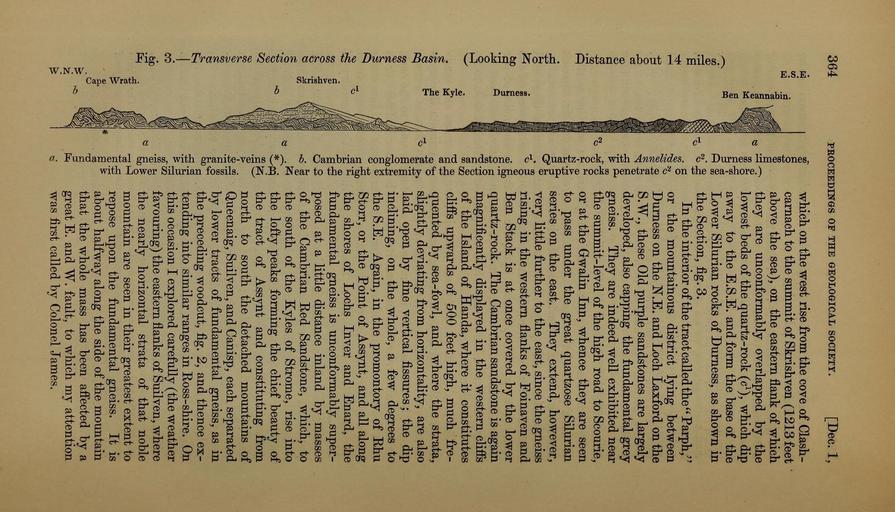MAKE A MEME
View Large Image

| View Original: | The_Quarterly_journal_of_the_Geological_Society_of_London_(12981007745).jpg (2032x1162) | |||
| Download: | Original | Medium | Small | Thumb |
| Courtesy of: | commons.wikimedia.org | More Like This | ||
| Keywords: The Quarterly journal of the Geological Society of London (12981007745).jpg 364 <br> PKOCEEDINGS OP THE GEOLOGICAL SOCIETY <br> Dec 1 <br> u <br> <br> tnOQ <br> CO <br> bJO <br> a <br> which on the west rise from the cove of Clash- <br> carnach to the summit of Skrishven 1213 feet <br> above the sea on the eastern flank of which <br> they are unconformably overlapped by the <br> lowest beds of the quartz-rock c which dip <br> away to the E S E and form the base of the <br> Lower Silurian rocks of Durness as shown in <br> the Section fig 3 <br> In the interior of the tract called the ' Parph <br> or the mountainous district lying between <br> Durness on the N E and Loch Laxford on the <br> S W these Old purple sandstones are largely <br> developed also capping the fundamental grey <br> gneiss They are indeed well exhibited near <br> the summit-level of the high road to Scourie <br> or at the Grwalin Inn whence they are seen <br> to pass under the great quartzose Silurian <br> series on the east They extend however <br> very little further to the east since the gneiss <br> rising in the western flanks of Foinaven and <br> Ben Stack is at once covered by the lower <br> quartz-rock The Cambrian sandstone is again <br> magnificently displayed in the western cliflfe <br> of the Island of Handa where it constitutes <br> cliffs upwards of 500 feet high much fre- <br> quented by sea-fowl and where the strata <br> slightly deviating from horizontahty are also <br> laid open by fine vertical fissures; the dip <br> inclining on the whole a few degrees to <br> the S E Again in the promontory of Rhu <br> Storr or the Point of Assynt and all along <br> the shores of Lochs Inver and Enard the <br> fundamental gneiss is unconformably super- <br> posed at a little distance inland by masses <br> of the Cambrian Red Sandstone which to <br> the south of the Kyles of Strome rise into <br> the lofty peaks forming the chief beauty of <br> the tract of Assynt and constituting from <br> north to south the detached mountains of <br> Queenaig Suilven and Canisp each separated <br> by lower tracts of fundamental gneiss as in <br> the preceding woodcut fig 2 and thence ex- <br> tending into similar ranges in Ross-shire On <br> this occasion I explored carefuUy the weather <br> favouring the eastern flanks of Suilven where <br> the nearly horizontal strata of that noble <br> mountain are seen in their greatest extent to <br> repose upon the fundamental gneiss It is <br> about halfway along the side of the mountain <br> that the whole mass has been afiected by a <br> great E and W fault to which my attention <br> was first called bv Colonel James 36161921 111474 51125 Page 364 Text v 15 http //www biodiversitylibrary org/page/36161921 1859 Geological Society of London Biodiversity Heritage Library The Quarterly journal of the Geological Society of London v 15 1859 Geology Periodicals Smithsonian Libraries bhl page 36161921 dc identifier http //biodiversitylibrary org/page/36161921 smithsonian libraries Information field Flickr posted date ISOdate 2014-03-07 Check categories 2015 August 26 CC-BY-2 0 BioDivLibrary https //flickr com/photos/61021753 N02/12981007745 2015-08-26 14 54 03 cc-by-2 0 PD-old-70-1923 The Quarterly journal of the Geological Society of London 1859 Photos uploaded from Flickr by Fæ using a script | ||||